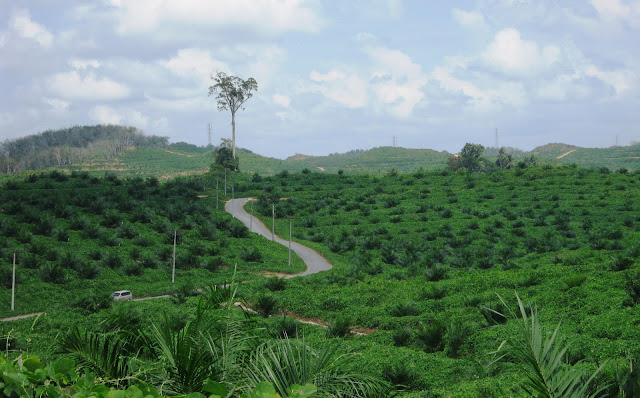Indonesia’s forests have shrunk dramatically in the past few decades. They have been cut with increasing speed for their timber, and to clear land for agriculture and development. Lowland forest areas have disappeared with particular speed because they are most accessible. They are also among the most commercially attractive forests: Indonesia’s lowland forests contain a large percentage of Dipterocarps, hardwood trees whose timber fetches high prices on international markets.
The causes of forest loss are complex and interlinked, but a typical story unfolds as follows: Commercial loggers move in first to extract the most valuable tree species for timber and plywood. Then, with roads in place, illegal loggers follow suit and/or companies clear the remaining trees to use them for pulp fibre. Often, forests are burned to clear the ground underneath; such burning gave way to the uncontrolled fires that blanketed Southeast Asia in a deadly haze in 1997. Once forests have been cleared, companies convert them to palm oil or commercial pulpwood plantations.
Sumatra has been a target for the oil palm, timber and pulp and paper industries because of its easy access and relatively developed infrastructure. Ninety two percent of Indonesia’s oil palm plantations are located in Sumatra. In 1900, Sumatra had 16 million hectares of lowland forest; today that figure has dwindled to a mere 500,000 hectares. Lowland forests in Sumatra are now regarded as among the most threatened forests in the world.
Sumatra has some conservation forests – designated as such by the Indonesian government for conservation of nature and genetic resources. Most protected areas are in hilly regions because lowland forests have been earmarked for development – lowland forests have little formal protection. Satellite analysis shows that even in protected areas, 10% of the land is without forest cover thanks to encroachment and illegal logging.

